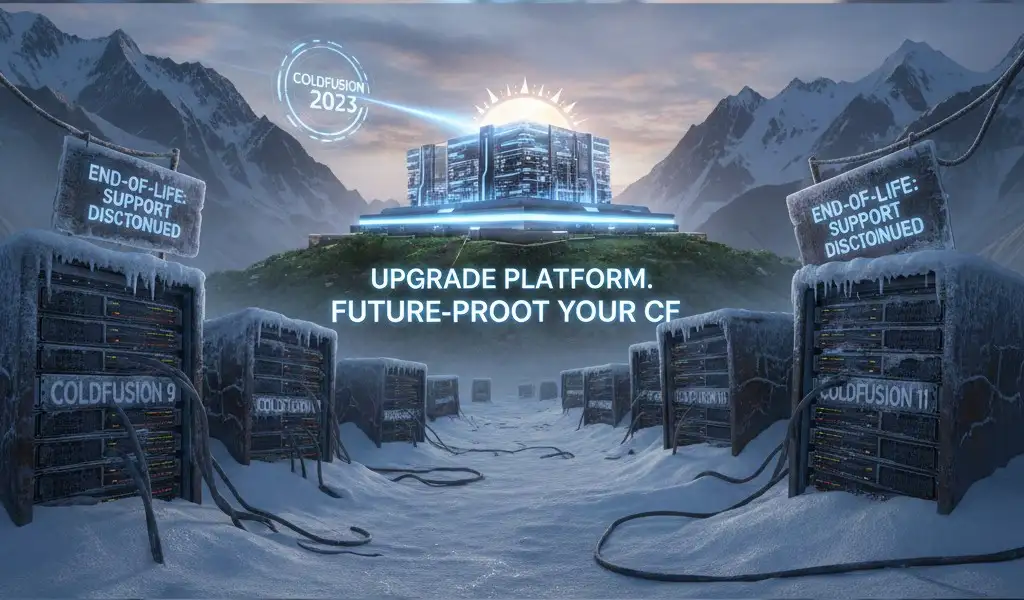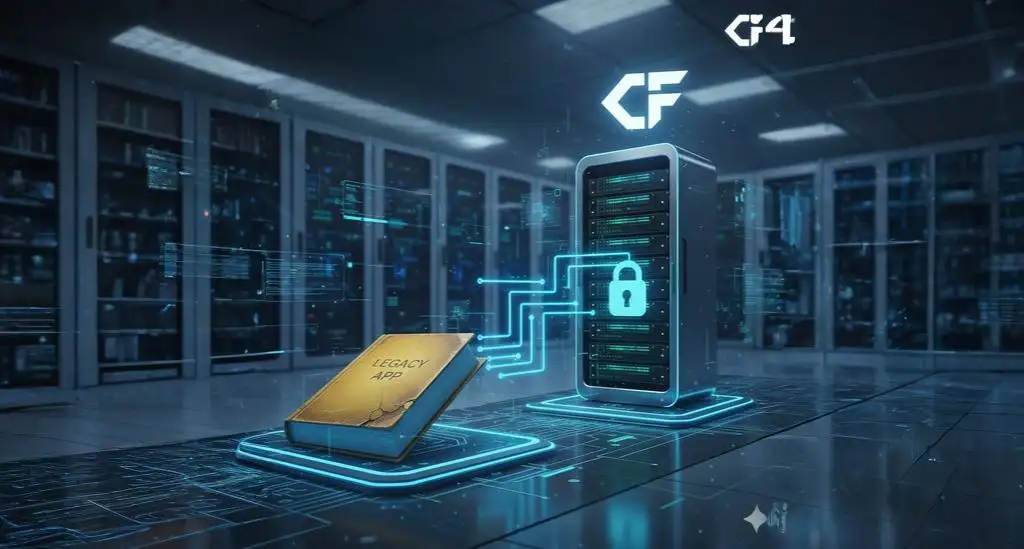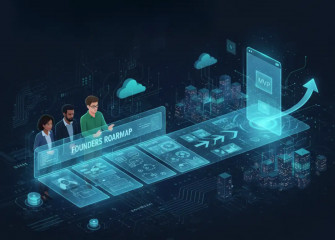ColdFusion Maintenance Guide: Essential Practices for Long-Term Project Success
Published by: Gautham Krishna RNov 18, 2025Blog
Organizations that implement structured ColdFusion maintenance programs experience 60% fewer security incidents and reduce emergency development costs by up to 45%. With proper ongoing maintenance, ColdFusion applications can deliver decades of reliable service while adapting to evolving business needs and technological landscapes.
Long-term ColdFusion project success depends not just on initial development quality but on consistent, strategic maintenance. Whether you're supporting legacy CF applications or building new solutions, implementing these proven practices ensures your ColdFusion investments continue delivering value year after year.
Why Ongoing ColdFusion Maintenance Matters
ColdFusion remains a powerful enterprise solution, with approximately 40,000 companies worldwide still relying on CFML applications for critical business operations. However, like any technology platform, ColdFusion requires regular attention to maintain security, performance, and compatibility.
The consequences of neglected ColdFusion maintenance include:
- Security vulnerabilities from unpatched systems
- Performance degradation affecting user experience
- Technical debt accumulation making changes increasingly expensive
- Compatibility issues with modern infrastructure and browsers
Essential ColdFusion Maintenance Practices
1. Regular Security Updates and Patching
Adobe's continued commitment to ColdFusion means regular security updates that address newly discovered vulnerabilities. Organizations implementing professional ColdFusion development services benefit from:
- Scheduled security patch application
- Vulnerability assessment and remediation
- Server hardening and configuration reviews
- Access control and authentication audits
2. Performance Monitoring and Optimization
Continuous performance monitoring identifies issues before they impact users. Key strategies include:
- Application performance monitoring with tools like FusionReactor
- Database query optimization and index maintenance
- Caching strategy implementation for frequently accessed data
- Code profiling to identify and resolve bottlenecks
3. Structured Version Control and Deployment
Even mature ColdFusion projects benefit from modern development practices:
- Git-based version control with proper branching strategies
- Automated deployment pipelines reducing human error
- Environment consistency across development, staging, and production
- Rollback procedures for quick recovery from issues
4. Comprehensive Backup and Disaster Recovery
Data loss remains a significant risk for long-term projects. Effective backup strategies include:
- Automated daily backups of both code and databases
- Off-site backup storage for disaster recovery
- Regular recovery testing to verify backup integrity
- Documented recovery procedures for emergency situations
5. Technical Debt Management
Proactive technical debt prevention includes:
- Code review processes maintaining quality standards
- Refactoring schedules for legacy components
- Documentation maintenance for knowledge preservation
- Dependency management for third-party libraries
ColdFusion Maintenance Schedule

Modernizing Legacy ColdFusion Applications
Many organizations maintain ColdFusion applications that have been in production for a decade or more. Modernization strategies include:
Framework Integration: Incorporating modern CFML frameworks like ColdBox or Framework/One to improve code organization and maintainability.
API-First Approach: Gradually replacing monolithic architectures with API-driven microservices while preserving existing functionality.
Frontend Modernization: Integrating modern JavaScript frameworks with ColdFusion backends to improve user experience without complete rewrites.
Cloud Migration: Moving from on-premise ColdFusion servers to cloud platforms for improved scalability and reduced infrastructure management.
FAQs
Q: How often should ColdFusion security updates be applied?
A: Adobe typically releases scheduled security updates quarterly, with emergency patches for critical vulnerabilities. Best practice is to apply security patches within 30 days of release, with critical patches applied within 72 hours for internet-facing applications.
Q: What's the typical cost for ongoing ColdFusion maintenance?
A: Maintenance costs vary based on application complexity and requirements, but typically range from 15-25% of initial development cost annually. Organizations using managed ColdFusion services often realize 30-40% cost savings compared to in-house maintenance.
Q: How long should a well-maintained ColdFusion application last?
A: Properly maintained ColdFusion applications can remain productive for 10-15 years or longer. The key factors are regular updates, architectural adaptability, and alignment with business needs rather than arbitrary technology timelines.
Q: What are the signs that a ColdFusion application needs modernization?
A: Key indicators include: increasing bug frequency, difficulty finding developers with legacy skills, compatibility issues with modern browsers, performance problems with growing user loads, and inability to integrate with newer systems.
Q: Can ColdFusion applications integrate with modern cloud platforms?
A: Absolutely. ColdFusion applications run effectively on all major cloud platforms including AWS, Azure, and Google Cloud. Containerization with Docker further enhances deployment flexibility and scalability.
Building a Sustainable ColdFusion Strategy
Long-term ColdFusion success requires more than just technical maintenance--it demands strategic planning. Organizations should consider:
Skills Development: Investing in training for existing developers or partnering with specialized ColdFusion development teams to maintain expertise.
Technology Roadmaps: Planning gradual modernization rather than emergency rewrites when systems become problematic.
Budget Allocation: Treating maintenance as an ongoing operational expense rather than a one-time project cost.
Vendor Evaluation: Regularly assessing whether current hosting, tooling, and support partners continue meeting evolving needs.
Conclusion: The Long View on ColdFusion Success
ColdFusion remains a viable, powerful platform for enterprise applications when properly maintained. The organizations achieving the greatest long-term success with ColdFusion treat maintenance as a strategic advantage rather than a necessary evil.
By implementing structured maintenance practices, monitoring emerging technologies, and planning for gradual evolution, businesses can extend the lifespan of their ColdFusion investments while maintaining security, performance, and alignment with business objectives.
The most successful ColdFusion applications aren't those that never change--they're those that evolve systematically through careful, continuous maintenance and strategic modernization.
Need expert support for your ColdFusion applications?



 UX Design for Startups: Why Yo....
UX Design for Startups: Why Yo....
 ColdFusion End-of-Life: The Cr....
ColdFusion End-of-Life: The Cr....
 A Proven ColdFusion Migration ....
A Proven ColdFusion Migration ....
 Brand Refresh vs. Rebrand: You....
Brand Refresh vs. Rebrand: You....
 Brand Positioning Explained: Y....
Brand Positioning Explained: Y....



Your Trusted Software Development Company